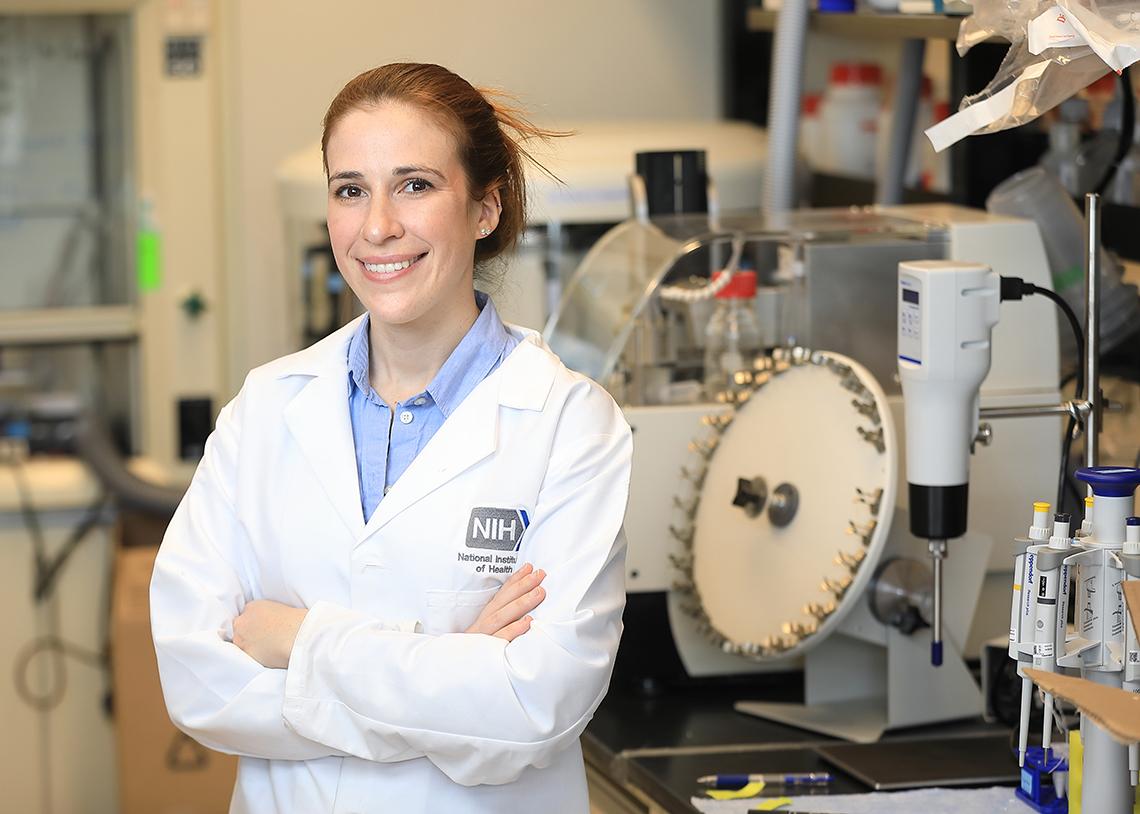NIBIB Researcher Named to TIME100 Next List

Photo: Chia-Chi Charlie Chang
These days, many medical advances result from collaboration between clinicians, scientists and engineers. As disciplines become increasingly intertwined, the ability to navigate partnerships across fields will only become more essential. Few are perhaps better suited for this future than Dr. Kaitlyn Sadtler.
A bioengineer at the National Institute of Biomedical Imaging and Bioengineering (NIBIB), Sadtler has flourished as a leader of many impactful, interdisciplinary studies. For her role in shaping the future of medical research, TIME magazine named her to the TIME100 Next 2024 List.
Sadtler got her start in science with immunology and eventually became well versed in regenerative medicine and materials science. The NIBIB lab Sadtler oversees, the Section on Immunoengineering, operates at the crossing of these subjects, examining the immune system’s response to medical devices and its role in wound healing.
Her work has revealed mechanisms by which certain medical devices steer the immune system toward wound healing while others trigger inflammation and scarring. The findings could be instrumental in designing medical technology that is safer and longer lasting in the body.
In 2020, Sadtler pivoted her focus to the spread of Covid-19. She took charge of a team that established methods for accurate lab-based serology testing and then analyzed samples from more than 9,000 people, gaining insights into undiagnosed infections across the country.
To answer complex research questions, Sadtler has worked side-by-side with engineers, biologists, chemists and surgeons. Her success stems not only from her interest in science but also her passion for communication.
“Dissemination is a huge part of doing science. It’s needed to build public trust but also to reach potential collaborators in other fields that could bring a new perspective to the table,” Sadtler said.
Opportunities for formal science communication training as a student were sparse for Sadtler, so she practiced by explaining her studies to friends and family. Then, while a postdoctoral fellow, she applied for an opportunity to grow as a communicator and explain science to a broader audience.
In 2018, Sadtler became a TED Fellow and delivered a talk covering her discovery of the critical role a specific kind of immune cell played in muscle regeneration.
She received coaching from professionals on strategies to convey complex subjects, such as the use of plain language, comparisons to familiar ideas, and structuring a message into a story—skills she continues to use even when communicating with scientists.
A key part of her skillset is knowing her audience.
For example, during the pandemic, she led teams of engineers, clinicians and mathematicians, all of whom brought forth their own terms and methodologies. She worked to familiarize herself with new ideas and convey her own to establish a common language.
When communicating with the public, Sadtler tries to avoid common pitfalls such as overselling new technologies to an eager public. She recalls a time, close to the turn of the century, when regenerative medicine was spoken of as a cure-all solution.
“In reality, science takes time and lots of trial and error,” she said.
Now, decades later, she believes regenerative medicine is headed in the right direction by integrating ideas and people from diverse fields and backgrounds.
